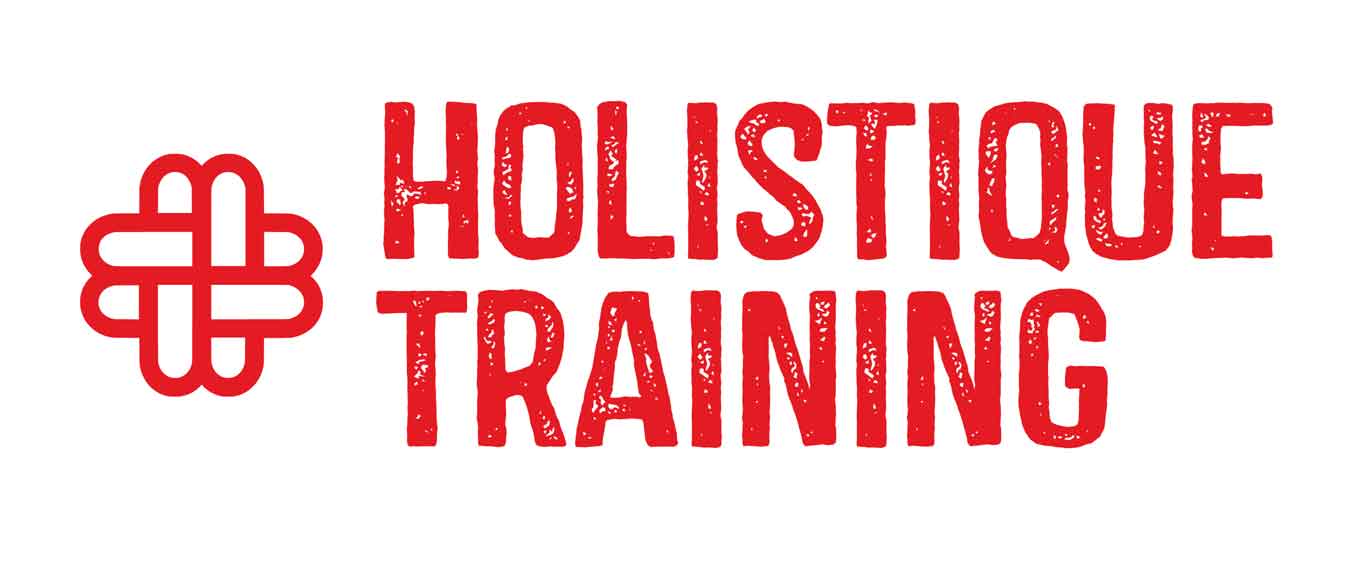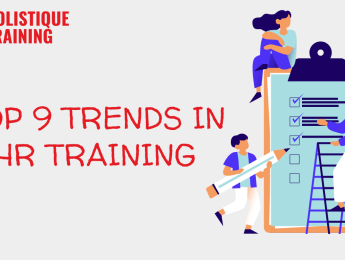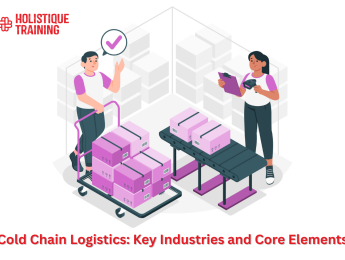- Table of Contents
- Introduction
- What Is Hot-Desking?
- When Has Hot-Desking Become More Popular?
- 1. The Rise of Remote and Hybrid Work Models
- 2. Economic Pressures and Cost Optimization
- 3. The Growth of Coworking Spaces
- 4. Emphasis on Collaboration and Innovation
- 5. Advances in Technology
- 6. Changing Employee Expectations
- 7. Sustainability and Space Efficiency
- 8 Hot-Desking Pros
- 1. Cost Savings
- 2. Flexibility
- 3. Encourages Collaboration
- 4. Promotes Cleanliness
- 5. Supports Hybrid Work Models
- 6. Increases Space Utilization
- 7. Encourages Movement
- 8. Adaptability to Change
- 8 Hot-Desking Cons
- 1. Lack of Personalization
- 2. Difficulty Finding a Desk
- 3. Disruptions to Routine
- 4. Privacy Concerns
- 5. Hygiene Issues
- 6. Technology Challenges
- 7. Loss of Team Cohesion
- 8. Employee Resistance
- Difference Between Hot-Desking and Hoteling
- The Different Hot-Desking Arrangements
- 1. Free-For-All Hot-Desking
- 2. Zoned Hot-Desking
- 3. Assigned Hot-Desking
- 4. Desk-Booking Hot-Desking
- 5. Activity-Based Hot-Desking
- Hot-Desking Success Story
- Conclusion
Introduction
Workplaces are evolving. The traditional idea of a fixed desk for every employee is being replaced by more flexible arrangements, and one of the most talked-about solutions is hot-desking. This blog post dives deep into the concept of hot-desking—what it is, why it’s gained popularity, its benefits, drawbacks, and how companies can make it work. We’ll also explore the difference between hot-desking and hoteling, various hot-desking setups, and even share a success story to illustrate how this model can transform workplaces.
Whether you’re an employee wondering how this trend might affect your daily routine or an employer considering implementing it, this detailed guide will help you understand the ins and outs of hot-desking, so you can make informed decisions about whether it’s the right fit for your organization.
What Is Hot-Desking?
Hot-desking is a flexible workplace arrangement where employees do not have assigned desks. Instead, they select an available desk or workstation on a first-come, first-served basis when they arrive at the office. This system eliminates the concept of permanent seating and promotes a more dynamic and adaptable work environment.
The term “hot-desking” is said to have originated from the naval practice of “hot bunking,” where sailors on submarines shared bunks in shifts. In the workplace, the idea is similar: shared resources for maximum efficiency.
Hot-desking is often used in open-plan offices but can also be implemented in coworking spaces, hybrid work environments, and even in larger organizations that want to optimize their office space.
When Has Hot-Desking Become More Popular?
Hot-desking has been around for decades, but its popularity surged in recent years due to several key factors.
1. The Rise of Remote and Hybrid Work Models
The COVID-19 pandemic marked a turning point for workplace dynamics. As millions of employees shifted to remote work, office spaces were left underutilized. When businesses began returning to physical office spaces, many adopted hybrid work models, allowing employees to split their time between home and the office. This shift made the traditional model of assigned desks inefficient, as many desks sat empty on any given day. Hot-desking emerged as a practical solution to accommodate fluctuating office attendance while optimizing space usage.
Hybrid work has also changed how employees view their relationship with the office. For many, the office is no longer a place where they must be every day but rather a hub for collaboration, meetings, and teamwork. Hot-desking aligns with this mindset, offering flexibility and adaptability for employees who don’t need a permanent workstation. In fact, 77% of potential employees now consider flexible work arrangements a key factor when choosing an organization, making hot-desking an attractive option for businesses looking to attract and retain top talent.
2. Economic Pressures and Cost Optimization
Real estate costs are among the largest expenses for companies, particularly in urban areas where office space is at a premium. Businesses have increasingly sought ways to reduce their overhead without compromising employee productivity. According to an Inc. survey, 40% of dedicated desk space in offices sits unused on any given day, highlighting significant inefficiencies in traditional setups. Hot-desking addresses this issue by allowing organizations to downsize their office footprint or use existing spaces more efficiently, ultimately cutting costs on rent, utilities, and maintenance.
For example, a company with 1,000 employees might find that only 60% of them are in the office on a typical day. Instead of maintaining 1,000 desks, they can implement a hot-desking system with fewer desks, reducing costs while still meeting employee needs. This cost-saving potential has made hot-desking particularly appealing to startups, small businesses, and large corporations alike.
3. The Growth of Coworking Spaces
Coworking spaces like WeWork, Regus, and Industrious have played a significant role in popularizing hot-desking. These spaces provide shared work environments where individuals and teams can rent desks or offices on a flexible basis. The success of coworking spaces has demonstrated the viability of shared workspaces and introduced freelancers, entrepreneurs, and remote workers to the benefits of hot-desking.
As coworking spaces grew in popularity, they also influenced how traditional offices were designed. Companies began incorporating coworking-inspired features, such as shared desks, lounge areas, and collaborative zones, into their own offices. This trend further normalized hot-desking as a practical and modern workplace solution.
4. Emphasis on Collaboration and Innovation
Modern workplaces prioritize collaboration, creativity, and cross-functional teamwork. Traditional office layouts, with assigned desks and rigid seating arrangements, can inadvertently reinforce silos and limit interactions between employees. Hot-desking, on the other hand, encourages employees to sit in different areas and interact with colleagues they might not otherwise encounter.
This emphasis on collaboration is particularly important in industries that thrive on innovation, such as technology, marketing, and design. By breaking down physical and social barriers, hot-desking fosters a more dynamic and interconnected workplace culture.
5. Advances in Technology
The rise of cloud computing, mobile devices, and collaboration tools has made hot-desking more feasible than ever before. Employees no longer need to be tethered to a specific desk with a desktop computer and filing cabinet. Instead, they can work from anywhere with a laptop, tablet, or smartphone.
Tools like Slack, Microsoft Teams, and Google Workspace allow employees to communicate and collaborate seamlessly, regardless of where they’re sitting. Meanwhile, desk-booking apps and smart office technology make it easy for employees to find available workstations and reserve spaces. These technological advancements have removed many of the logistical barriers that once made hot-desking challenging.
6. Changing Employee Expectations
Younger generations of workers, particularly Millennials and Gen Z, value flexibility and autonomy in the workplace. They’re less attached to the idea of a permanent desk and more interested in having the freedom to choose where and how they work. Hot-desking aligns with these preferences, offering employees the flexibility to adapt their workspace to their needs on any given day.
Additionally, many employees now view the office as a place for collaboration and social interaction rather than a space for heads-down work. Hot-desking supports this shift by creating a more fluid and adaptable office environment that caters to a variety of work styles.
7. Sustainability and Space Efficiency
Sustainability has become a key consideration for many organizations. Hot-desking allows companies to make better use of their office space, reducing waste and minimizing their environmental footprint. For example, by downsizing their office or consolidating locations, businesses can lower their energy consumption and reduce the resources needed to maintain their facilities.
This focus on sustainability has made hot-desking an attractive option for environmentally conscious companies looking to align their workplace practices with their corporate values.
In summary, the popularity of hot-desking has been driven by a combination of cultural shifts, economic pressures, technological advancements, and changing employee expectations. As workplaces continue to evolve, hot-desking offers a flexible and cost-effective solution that meets the needs of both businesses and employees. However, its success depends on thoughtful implementation and a clear understanding of the challenges and opportunities it presents.
8 Hot-Desking Pros
Hot-desking has become a popular choice for many organizations due to its ability to address modern workplace challenges while offering a range of benefits for both employers and employees. When implemented thoughtfully, hot-desking can transform the way people work, fostering collaboration, flexibility, and efficiency. Below, we explore eight key advantages of hot-desking and why it has become a preferred model for many businesses.
1. Cost Savings
One of the most significant advantages of hot-desking is the potential for cost savings. Maintaining a traditional office setup with assigned desks often requires companies to lease or purchase large office spaces, even if not all desks are occupied at the same time. Hot-desking allows organizations to reduce their real estate needs by optimizing space usage.
For example, a company that adopts a hybrid work model may find that only 50-70% of employees are in the office on any given day. Instead of paying for unused desks, the company can implement hot-desking, ensuring that workstations are used only when needed. This approach not only saves money on rent but also reduces costs associated with utilities, office furniture, and maintenance.
Startups and small businesses, in particular, benefit from this cost-effective solution, as it enables them to allocate resources toward growth and innovation rather than office space.
2. Flexibility
Flexibility is one of the hallmarks of hot-desking. Employees are no longer tied to a specific desk, giving them the freedom to choose where they work based on their tasks, preferences, or mood. For instance, an employee who needs to focus on a detailed report might select a quiet corner, while another preparing for a brainstorming session might opt for a collaborative zone.
This flexibility empowers employees to take control of their work environment, enhancing their sense of autonomy and satisfaction. It also accommodates varying schedules and work styles, making it easier for employees to adapt to changing priorities and workflows.
For employers, this flexibility translates to a more adaptable workforce. Hot-desking allows organizations to accommodate fluctuating team sizes, temporary workers, or visiting employees without the need to reconfigure office layouts constantly.
3. Encourages Collaboration
Hot-desking naturally breaks down barriers between teams and departments, fostering a culture of collaboration and innovation. When employees are not confined to specific desks or areas, they’re more likely to interact with colleagues from different parts of the organization. These spontaneous interactions can lead to fresh ideas, new perspectives, and stronger working relationships.
For example, an employee from the marketing team might sit next to a software developer one day, sparking a conversation about how to better integrate technology into a campaign. These types of cross-functional discussions are less likely to occur in traditional office setups, where employees often stick to their assigned areas.
In addition, hot-desking can create a more inclusive workplace by encouraging employees to mingle with colleagues they might not otherwise meet. This can improve communication, teamwork, and overall morale.
4. Promotes Cleanliness
Hot-desking often goes hand-in-hand with clean-desk policies, which require employees to clear their workstations at the end of the day. This ensures that desks remain tidy and ready for the next user, creating a more organized and professional-looking office environment.
In traditional offices, personal desks can become cluttered with papers, coffee mugs, and other items, leading to a less appealing workspace. With hot-desking, employees are encouraged to keep their belongings minimal and their workspaces clean, which can lead to a more pleasant and productive atmosphere for everyone.
Additionally, shared workspaces are often cleaned more frequently, especially in the wake of the COVID-19 pandemic. Many companies have implemented strict hygiene protocols for hot-desking setups, including regular sanitization of desks, chairs, and equipment. This focus on cleanliness can help reduce the spread of germs and create a healthier workplace.
5. Supports Hybrid Work Models
As hybrid work becomes the norm, hot-desking provides a practical solution for managing office space. In a hybrid model, employees split their time between working remotely and coming into the office. With fewer people in the office at any given time, assigned desks often go unused, leading to wasted space.
Hot-desking ensures that desks are available for employees who need them without leaving large portions of the office empty. This makes it easier for companies to accommodate hybrid work arrangements while maintaining an efficient and cost-effective workspace.
For employees, hot-desking aligns with the flexibility of hybrid work. They can choose when and where they work, whether it’s from home, a coworking space, or a shared desk in the office. This freedom can improve work-life balance and overall job satisfaction.
6. Increases Space Utilization
Office space is a valuable resource, and hot-desking helps companies make the most of it. By eliminating assigned desks, businesses can maximize the use of their office space, ensuring that every workstation serves a purpose.
For example, instead of dedicating an entire floor to desks that may only be used part-time, a company can create a mix of hot-desking areas, meeting rooms, and collaborative zones. This approach allows employees to choose the type of workspace that best suits their needs while ensuring that no area goes to waste.
In industries where space is limited or expensive, such as tech hubs or urban centers, this efficient use of space can be a game-changer. It allows companies to operate in smaller offices without sacrificing functionality or employee satisfaction.
7. Encourages Movement
Hot-desking promotes physical activity by encouraging employees to move around the office. Instead of sitting at the same desk all day, employees may walk to different areas to find a workspace, attend meetings, or collaborate with colleagues.
This increased movement can have several health benefits, including improved circulation, reduced stress, and a lower risk of health issues associated with prolonged sitting. It also contributes to a more dynamic and energetic work environment, as employees are less likely to feel stuck in one place.
For employees who enjoy variety, hot-desking offers the opportunity to experience different parts of the office throughout the day. Whether it’s a sunny spot by the window or a quiet nook for focused work, this change of scenery can boost creativity and productivity. In fact, studies indicate that 46% of employees report increased productivity in a hot-desking setup.
8. Adaptability to Change
In today’s fast-paced business world, adaptability is key. Hot-desking allows companies to respond quickly to changes in workforce size, office design, or work arrangements. Whether a company is scaling up, downsizing, or reconfiguring its office, hot-desking provides the flexibility to adapt without major disruptions.
For instance, if a company hires a new team or expands into a new market, it can easily accommodate additional employees without needing to assign permanent desks. Similarly, if a team transitions to fully remote work, the office space can be repurposed for other uses without leaving empty desks behind.
This adaptability makes hot-desking an ideal solution for organizations that value agility and resilience. It ensures that the office remains functional and efficient, no matter what changes come their way.
In conclusion, hot-desking offers numerous advantages that align with the needs of modern workplaces. From cost savings and flexibility to collaboration and adaptability, this model provides a practical and innovative solution for businesses looking to optimize their office space and empower their employees. While it does require careful planning and thoughtful implementation, the benefits of hot-desking can far outweigh the challenges, making it a valuable tool for organizations of all sizes.
8 Hot-Desking Cons
While hot-desking offers flexibility, cost savings, and opportunities for collaboration, it’s not without its challenges. For some employees, the lack of a permanent desk or workspace can lead to frustration, inefficiency, and even reduced morale. Businesses must carefully weigh these potential drawbacks and address them proactively to ensure the success of a hot-desking arrangement. Below are eight significant disadvantages of hot-desking, along with insights into how they can impact employees and organizations.
1. Lack of Personalization
One of the most common complaints about hot-desking is the inability to personalize a workspace. In traditional office setups, employees often decorate their desks with personal items like family photos, plants, or motivational quotes. These small touches can make a workspace feel comfortable, familiar, and uniquely theirs, contributing to a sense of belonging.
Hot-desking eliminates this opportunity for personalization, as employees use different desks each day. This lack of ownership can make the office feel impersonal and even alienating for some workers, particularly those who value stability and routine. Over time, this could lead to a decline in job satisfaction and emotional connection to the workplace.
Employers can mitigate this by creating shared personal storage areas, such as lockers, where employees can keep their belongings. However, it’s difficult to replicate the sense of ownership that comes with having a dedicated desk.
2. Difficulty Finding a Desk
In busy offices, employees may struggle to find an available desk, especially during peak hours. This can lead to a frustrating “first-come, first-served” scramble each morning, where employees feel pressured to arrive early just to secure a spot.
The stress of finding a desk can disrupt employees’ routines and waste valuable time that could be spent on productive work. It can also create tension among colleagues, particularly if certain desks or areas are perceived as more desirable than others.
Technology can help alleviate this issue. Desk-booking apps, for example, allow employees to reserve a workstation in advance, ensuring they have a place to work when they arrive. However, without effective systems in place, this drawback can significantly undermine the benefits of hot-desking.
3. Disruptions to Routine
For employees who thrive on routine, the constant change of desks can be unsettling. Many people perform better when they have a consistent environment where they can settle in, focus, and work efficiently. Hot-desking disrupts this sense of stability, which can negatively impact productivity and morale.
For example, an employee who prefers a quiet corner might find themselves in a noisy collaborative zone one day, making it difficult to concentrate. Similarly, someone who likes working near a window might feel less motivated if stuck in a less desirable spot.
This lack of predictability can be particularly challenging for employees with specific needs, such as those who require ergonomic setups or tools like dual monitors. Without a consistent workspace, they may struggle to maintain their comfort and efficiency.
4. Privacy Concerns
Hot-desking often takes place in open-plan offices, which can make it difficult for employees to find privacy. Without a dedicated desk or enclosed space, employees may feel exposed, especially when working on sensitive tasks or having confidential conversations.
For example, an HR professional discussing a personnel issue or a finance employee handling sensitive data might struggle to find a private area where they can work without fear of being overheard. This lack of privacy can lead to discomfort and even anxiety, particularly for employees who value discretion.
Employers can address this by incorporating private workspaces, phone booths, or quiet zones into the office design. However, these solutions require careful planning and may not fully resolve the issue for every employee.
5. Hygiene Issues
Sharing desks raises concerns about cleanliness, especially in a post-pandemic world where health and hygiene are top priorities. Employees may worry about germs and the risk of illness, particularly if workstations aren’t cleaned thoroughly between uses.
For example, an employee might arrive at a desk to find crumbs on the keyboard, smudges on the monitor, or a coffee ring on the desk. These hygiene issues can create discomfort and reduce the overall appeal of the workspace.
To address this, many companies have implemented strict cleaning protocols, providing sanitizing wipes, hand sanitizer, and regular cleaning services. While these measures help, they may not completely eliminate employees’ concerns, especially during flu season or other health crises.
6. Technology Challenges
Hot-desking requires employees to set up their devices at a new desk each day, which can lead to technical difficulties and inefficiencies. For example, an employee might encounter issues connecting to the Wi-Fi, adjusting a monitor, or finding the right cables for their laptop.
These small but frequent disruptions can add up, cutting into productive work time and causing frustration. Employees who rely on specific equipment, such as ergonomic chairs or specialized keyboards, may also find it challenging to replicate their ideal setup at different desks.
Employers can mitigate these challenges by equipping desks with standardized technology, such as docking stations, monitors, and universal chargers. However, even with these solutions, the daily setup process can still feel cumbersome for some employees.
7. Loss of Team Cohesion
Hot-desking can unintentionally disrupt team dynamics by scattering employees across the office. In traditional setups, team members often sit together, fostering communication, collaboration, and a sense of camaraderie. With hot-desking, employees may end up sitting far from their teammates, making it harder to maintain close working relationships.
For example, a marketing team that once sat together might find themselves spread out across different zones, with less opportunity for spontaneous conversations or quick check-ins. This separation can hinder teamwork and make it harder for employees to feel connected to their colleagues.
To address this, some companies implement zoned hot-desking, where specific areas are designated for certain teams or departments. However, this approach can limit the flexibility of hot-desking and may not fully resolve the issue.
8. Employee Resistance
Not everyone embraces change, and hot-desking is no exception. For some employees, the shift away from assigned desks can feel like a loss of stability, comfort, or even status. This resistance can lead to dissatisfaction, reduced morale, and even turnover if employees feel their concerns are not being addressed.
For example, long-time employees who are accustomed to having a dedicated desk may view hot-desking as a downgrade, particularly if they lose access to a prime location or a personalized setup. Similarly, employees with specific needs, such as those who require ergonomic accommodations, may feel overlooked if the new system doesn’t meet their requirements.
To overcome resistance, companies must communicate the benefits of hot-desking clearly and involve employees in the planning process. Providing training, support, and opportunities for feedback can also help ease the transition and ensure that employees feel heard and valued.
In conclusion, while hot-desking offers many benefits, it’s important to recognize and address its potential drawbacks. From privacy concerns and hygiene issues to disruptions in routine and team cohesion, these challenges can impact employee satisfaction and productivity if left unchecked. By understanding these cons and proactively addressing them, organizations can create a hot-desking environment that works for everyone, balancing flexibility with employee needs. Thoughtful planning, open communication, and supportive policies are key to ensuring that hot-desking becomes a positive and effective solution rather than a source of frustration.
Difference Between Hot-Desking and Hoteling
Hot-desking and hoteling are often used interchangeably, but they’re not the same.
- Hot-Desking: Employees choose any available desk on a first-come, first-served basis. There’s no reservation system, and desks are occupied as needed.
- Hoteling: Employees reserve a desk or workstation in advance, much like booking a hotel room. This system provides more structure and ensures that a desk is available when needed.
While both models aim to optimize office space, hoteling offers more predictability, while hot-desking emphasizes spontaneity and flexibility.
Aspect | Hot-Desking | Hoteling |
Desk Assignment | Desks are available on a first-come, first-served basis | Employees must reserve desks in advance |
Reservation System | No formal reservation system is required | A reservation system (app or software) is used |
Flexibility | Offers greater flexibility for spontaneous desk use | Structured and planned desk usage |
Usage Tracking | Limited tracking of desk usage | Detailed tracking of desk reservations and usage |
Best For | Offices with a casual, free-flowing work environment | Offices with high demand for specific workspaces |
The Different Hot-Desking Arrangements
Hot-desking is a versatile workplace strategy, and its implementation can vary depending on an organization’s needs, office layout, and employee work styles. Different hot-desking arrangements cater to diverse preferences and tasks, ensuring that employees have access to the right type of workspace for their activities. Below, we explore some of the most common hot-desking arrangements and how they are designed to enhance flexibility and productivity.
1. Free-For-All Hot-Desking
In this classic hot-desking arrangement, employees can choose any available desk on a first-come, first-served basis. There are no reservations or restrictions, and desks are open to anyone who arrives at the office.
This approach works well in informal or dynamic work environments where employees value flexibility and spontaneity. It encourages movement and interaction among employees, fostering collaboration and fresh perspectives. However, it can also lead to competition for popular desks, making it less ideal for offices with high demand or limited space.
To make this arrangement successful, organizations often provide a variety of workstations—quiet areas, collaborative zones, and standing desks—so employees can select a space that suits their immediate needs.
2. Zoned Hot-Desking
Zoned hot-desking involves dividing the office into specific zones or areas, each tailored to a particular activity or group. For example, there might be zones for quiet, focused work, collaborative teamwork, or informal meetings.
Employees can choose desks within the zone that aligns with their tasks for the day. This arrangement adds a layer of structure to hot-desking, helping employees find the right environment for their work without sacrificing flexibility.
Zoned hot-desking is particularly effective for larger organizations with diverse teams or departments. It ensures that employees with similar needs or roles can work in proximity to one another while still benefiting from the flexibility of hot-desking.
Arrangement Type | Description | Best For | Challenges |
First-Come, First-Served | Employees choose any available desk | Small offices, startups | Desk availability issues |
Desk Reservation System | Desks booked through an app/system | Large teams, hybrid workers | Requires tech investment |
Zoned Hot-Desking | Specific zones for work types | Creative or collaborative teams | Space planning complexity |
Team-Based Hot-Desking | Teams share a designated area | Departmental collaboration | Limited cross-team interaction |
Activity-Based Working | Spaces designed for specific tasks | Diverse work styles | High setup costs |
3. Assigned Hot-Desking
In assigned hot-desking, employees are given access to a specific group of desks or workstations rather than the entire office. For example, a team might have access to a designated cluster of desks that they share on a rotating basis.
This arrangement strikes a balance between the flexibility of hot-desking and the familiarity of assigned seating. It allows employees to work near their teammates while still optimizing space usage. Assigned hot-desking is particularly useful in hybrid work environments, where only a portion of employees are in the office on any given day.
By keeping teams together, assigned hot-desking supports collaboration and team cohesion while reducing the risk of employees feeling disconnected from their colleagues.
4. Desk-Booking Hot-Desking
Desk-booking hot-desking introduces a reservation system, allowing employees to book a desk in advance. This arrangement combines elements of hot-desking and hoteling, giving employees the flexibility to choose their workspace while ensuring they have a spot when they arrive at the office.
Desk-booking systems are typically managed through software or apps that show real-time availability and allow employees to reserve desks for specific times or days. This arrangement eliminates the uncertainty of finding a desk and reduces the stress of arriving early to secure a spot.
Desk-booking hot-desking works well in busy offices with high demand for desks or specific workstations. It also provides valuable data on desk usage, helping organizations optimize their office layout and resources.
5. Activity-Based Hot-Desking
Activity-based hot-desking takes a task-oriented approach, with workstations designed for specific activities or work styles. For example, there might be:
- Quiet zones for focused work.
- Collaboration areas for group projects or brainstorming sessions.
- Lounge spaces for informal discussions or creative thinking.
- Standing desks for employees who prefer to work on their feet.
Employees choose their workspace based on the nature of their tasks, allowing them to work more effectively and comfortably. This arrangement emphasizes flexibility and customization, making it ideal for organizations that prioritize employee well-being and productivity.
Activity-based hot-desking requires thoughtful office design to ensure that each area meets the needs of its intended users. It also works best when employees are encouraged to move between spaces as their tasks change throughout the day.
In conclusion, the success of hot-desking depends on choosing the right arrangement for your organization’s culture, goals, and workforce. Whether it’s a free-for-all approach or a more structured system like zoned or desk-booking hot-desking, each arrangement offers unique benefits and challenges. By understanding these options, businesses can create a flexible and efficient workspace that supports employee needs while maximizing office resources.
Hot-Desking Success Story
One notable success story comes from Deloitte, a global professional services firm. The company implemented hot-desking in its Amsterdam office, known as “The Edge.”
The Edge is considered one of the most sustainable and technologically advanced office buildings in the world. With a focus on flexibility, the office features hot-desking, activity-based workspaces, and smart technology that allows employees to find available desks through a mobile app.
This approach has not only reduced costs but also improved employee satisfaction. Workers appreciate the variety of workspaces and the ability to choose where they work based on their tasks. The Edge has become a model for modern offices, showing how hot-desking can enhance productivity, collaboration, and sustainability.
Conclusion
Hot-desking represents a bold shift from traditional office setups, offering companies the chance to reduce costs, boost flexibility, and foster collaboration. However, its success hinges on addressing key challenges, such as privacy concerns, hygiene standards, and potential employee resistance. Without thoughtful planning and execution, the benefits of hot-desking can be overshadowed by its drawbacks.
To ensure a smooth transition, organizations must prioritize their workforce’s needs, adopt the right technology—such as desk-booking systems—and design an office layout that accommodates different work styles. Creating a supportive culture that embraces change is equally crucial, as it helps employees adapt to new ways of working. From open-plan setups to zoned arrangements or hybrid models, hot-desking can be tailored to meet the unique demands of any organization.
Hot-desking is more than just a passing trend—it’s a reflection of the evolving workplace and the growing need for agility in today’s business landscape. By understanding its advantages and challenges, companies can make informed decisions about whether this flexible approach aligns with their goals.
If you’re looking to lead change and implement innovative workplace strategies like hot-desking, our course, "Process Innovation in the Workplace," is the perfect resource. This course equips you with the tools and insights to drive transformation, manage resistance, and create environments that empower employees while optimizing productivity. Learn how to navigate the complexities of modern workspaces and position your business for success in the future of work.
Take the next step toward innovation—enroll in "Process Innovation in the Workplace" today and transform your office into a hub of efficiency, collaboration, and growth.

























